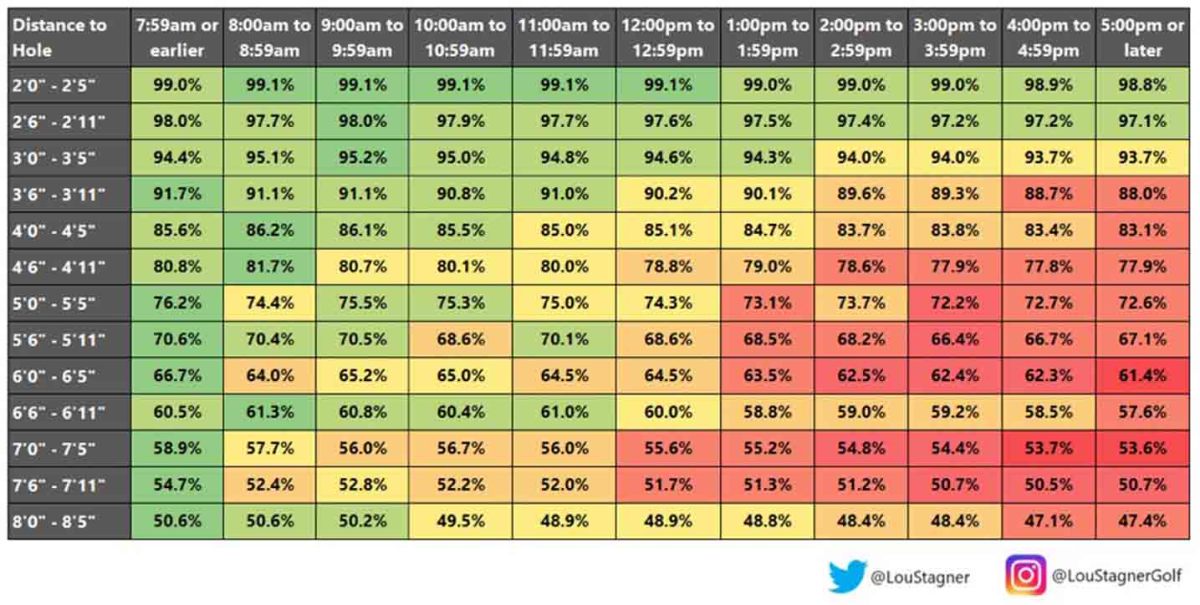Data Shows That Putting Later in a Day Is Harder for Tour Pros

Sometimes statistics make sense. Other times they don’t.
Then there are those times when you read a stat and simply lean back and say, “Wow!”
That is what I did when reading the chart by golf numbers guru Lou Stagner (@LouStagner) on putts made at certain times of day.
In talking to players about playing at certain times of day and how it impacts their approach, most mention the cold mornings of the West Coast tournaments and how they need to take an extra club when teeing off at 7 in the morning, while then adjusting as the temperature rises.
Almost never discussed: the time of day and the possibilities of making or missing a putt.
Stagner looked at putts made by PGA Tour players from 2004 to ’21 by distance and time.
The chart has distances from 2'0" to 8'5", and in some cases the rate of performance is staggering.

For example, a 6'0" to 6'5" putt taken before 8 a.m. has a make percentage rate at 66.7%, but if you go to 5 p.m. or later the rate of making the putt falls to 61.4%.
Stagner suggests that foot traffic and grass growth make a difference over the day, which changes the probability of success.
Stagner didn’t examine longer putts like 15 or 20 feet, because distance is the key in those cases rather than time of day.
Also, looking at the chart and factoring in that television forces leaders to play late versus others that are not in contention and playing early is a bit unfair.
In the 1960 Masters, Arnold Palmer led after the third round by one shot over Ben Hogan, Billy Casper, Ken Venturi, Julius Boros and Dow Finsterwald.
Palmer teed off at 1:29 p.m. with Billy Casper, but six other groups teed off after Palmer.
Venturi and Finsterwald teed off at 12:33 p.m. and Hogan was paired with Boros at 1:01 p.m.
Television was not an important part of professional golf in those days.
When Stagner was asked whether teeing off later versus early makes a difference, Stagner said off the top of his head it was likely worth at least one-fourth of a stroke.
In professional golf it all adds up, and it's possible that the demands of television and its need to have leaders tee off last can make a difference in the winner.
